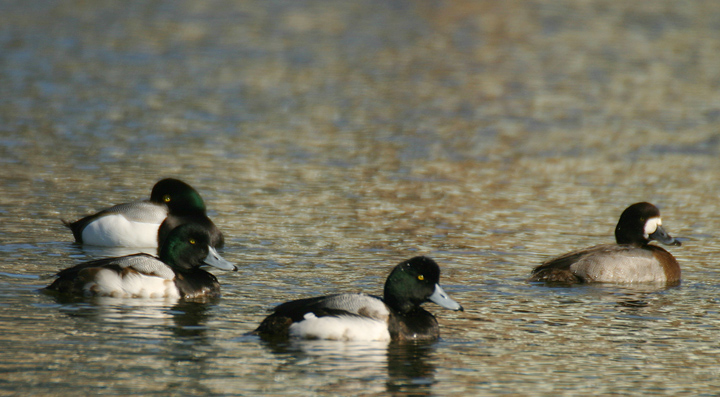Most recent For the Birds column: Fowl days of winter
Here is my most recent For the Birds column.
Even though the wonderful songs of cardinals and mourning doves greeted me as I stepped outside my house this morning, I’m not ready to proclaim that spring has arrived yet.
Yes, some flowers are blooming already and some early migrants such as grackles, red-
winged blackbirds and woodcock have returned to New England. And, yes, other signs of spring abound in the natural world. But March can be a tricky month.
It’s not so much that I don’t want spring to come. It’s more that I don’t want winter to end. I’m sure plenty of people don’t agree with me on that one.
Winter has so many advantages over the other seasons in terms of birdwatching. Two of the main ones are: no leaves on the trees and no crowds at the parks. A major disadvantage, of course, is that there are fewer birds around, for the most part.
But I love my winter birds. I love the chickadees, nuthatches, titmice, white-throated sparrows and dark-eyed juncos at the feeders. I especially love the ducks that visit our waters during the winter. I mentioned in an earlier column that the open water throughout New England has kept waterfowl here longer than usual.
Birders are often treated to surprises on the water, especially during the winter. I was photographing a flock of greater scaup at Veterans Park last week. Male scaup have dark heads, light bodies and blue bills. Sometimes they are referred to as “blue bills.” They nest far north and west of here.
The scaup in the harbor was treat enough, but as I was sitting on a rock snapping photos of the flock, another bird popped up right along the shoreline in front of me.
I had one second to refocus and grab a shot of the bird before it dove back into the water. I knew it was a grebe from the quick glance I got, but what type of grebe?
Pied-billed grebes are the most commonly seen grebe around here, but this one was different. The red eyes and small size gave it away as either a horned grebe or eared grebe — either way a good sighting. Inspection of the photo nailed it down as a horned grebe. Horned grebes nest in western Canada, but often use the Atlantic Coast for wintering grounds.
Red-necked grebes are seen on occasion in New England during the winter, too, but they are larger than the other grebes I mentioned.
It’s always fun to inspect our waters in the winter. You never know what you’ll see: ducks, geese, swans, grebes, loons. Summer brings its own treasures to our waters, but you know me, I’ve always been partial to our ducks.
•I’ve received several emails regarding last week’s For the Birds column about the red-throated loon I saw recently with fishing line stuck around its head. I’ll share some of the comments in a future column.
For the Birds runs Thursdays in The Hour. Chris Bosak can be reached via www.birdcallsradio.com. His radio show, Bird Calls, airs 1 to 2 p.m. Sundays on WGCH AM1490 or via “listen live” at www.birdcallsradio.com. Archives of Bird Calls may be found at www.birdcallsradio.com
ttp://www.quantcast.com/p-20vpx2QoUdNjs


